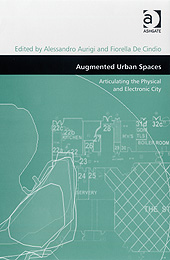It's convenient to store your white wine and perishables outside when your refrigerator is small. On our balcony, there are no predators to come and take our food. And the temperature outside remains a relatively stable level of cool. In Western Switzerland we are experiencing a cold snap and I brought in items I had been keeping outside so that they wouldn't freeze. I put them in the refrigerator but it was not easy finding room.
[side note: I'll never forget the remark made by an American I once visited shortly after she arrived in country. She asked me "What is it with these Barbie-size appliances?" In many parts of the world, Barbie-size appliances are all you need when you can easily and frequently stop at retail stores. We don't drive a pick-em-up-truck to the grocery store. We walk there, buy what we need and carry it home.]
When I need to stock up, I ask everyone in my family to pick up a few items, or I use the on-line shopping service, LeShop. It's time consuming to go through the catalog but it is convenient to have the products delivered to your door for approximately 4% of the purchase price. (LeShop charges 7.90 CHF to deliver a 200 CHF order).
Taking a break while perusing LeShop's catalog, I read this article in the New York Times about smart appliances of the future. "Is this the next step in the evolution of my Barbie-size appliance?", I asked myself.
I would find it terrifically useful if my next refrigerator not only kept an inventory of its (small but tightly packed cold box) contents, but also connected tightly (or even loosely) with my LeShop order.
What if I could select a recipe the night before, ask my refrigerator (including my balcony shelves) and pantry if there was any ingredient missing, and then have whatever I was missing brought to me? Almost as easy as going to a restaurant and ordering from a menu!
A fridge that synchronizes with my store would be very useful to me but maybe not everyone. Society may not want this time-saving feature. Some may like to shop for food. Before there were roads leading to every door, people questioned the benefit of the automobile. Until everyone had one in their home, office and pocket (or pocketbook) people questioned the utility of the telephone. Why have a camera in a telephone when you have both separately? Many other innovations have become essential components of daily life.
In a recent post RCR Wireless writer Marshall Kirkpatrick took this whole question of machines talking to one another further. He identified a topic that resembled my posts about new technology adoption and use of AR technology among kids and teens. Kirkpatrick points out how quickly technology has evolved since our parents and grandparents were born (television, Internet, etc) and asks:
How do we talk to children about such a radically new relationship with technology that will characterize the world they’ll work and play in as adults? Machine-to-Machine connectivity is not as easy to grasp as the prospect of people communicating with new devices.
And he brought in an illustration from an article co-authored by Dominique Guinard, one of the young Swiss IoT entrepreneurs. Please click on the illustration to enlarge! Under the illustration are Kirkpatrick's translations to English of all the things these connected devices are saying to the teen pictured on the right.
Freezer: I was thinking about defrosting today.
Clock: Aren’t you supposed to have left the house already by this time?
Faucet: I dripped all night! You should call the plumber.
Toaster: Do not give me too big a toast toast, this time, eh?
Cooking utensils: I remind you that you have not eaten any greens for three days.
Washing machine: And my clothes? who's going to hang them out to dry?


